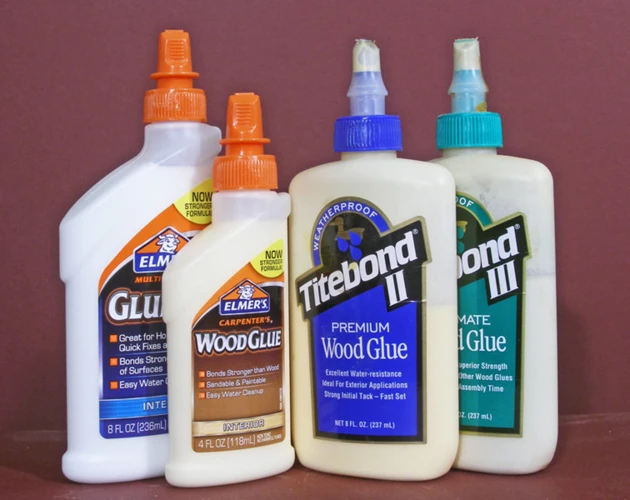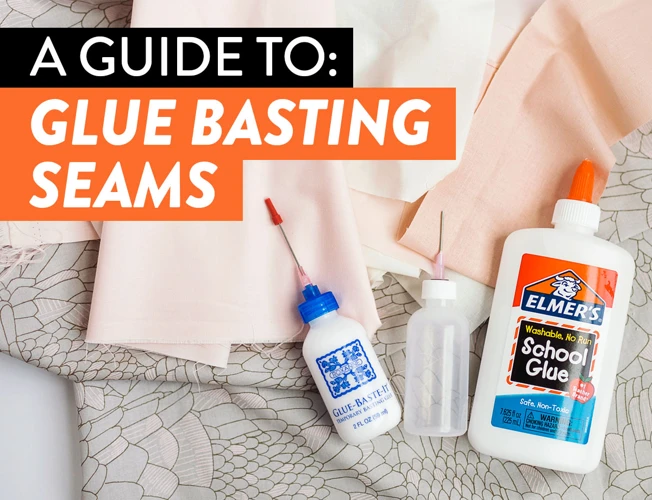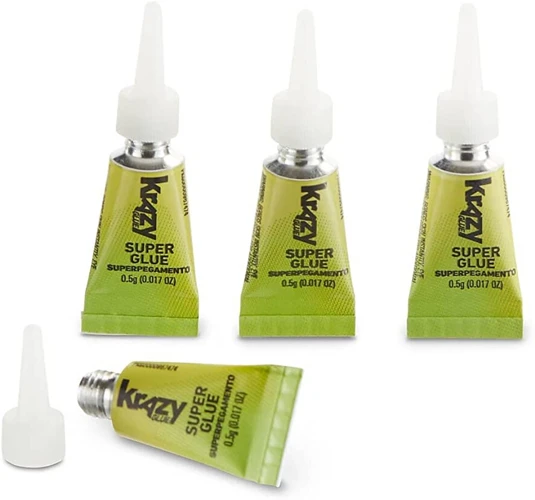Have you ever found yourself in need of glue but don’t have any in your house? Or maybe you’re looking for a fun DIY project to do with your children? Whatever the reason may be, learning how to make liquid glue at home is a simple and easy solution. Not only will you save money, but you’ll also have the satisfaction of knowing that you created something yourself. In this guide, we’ll walk you through the process step-by-step and provide tips and tricks to make it even easier. So roll up your sleeves and get ready to make your own liquid glue from scratch!
Materials Needed
Before embarking on the journey of creating your very own liquid glue, it’s important to first gather all the necessary materials. Here’s a comprehensive list of items that you will need to complete either the basic or decorative glue recipe. Make sure to double-check that you have all the materials to avoid any frustration during the crafting process. Let’s dive right in!
For Basic Glue
To make a basic liquid glue at home, you will need just a few simple ingredients that are likely already in your pantry. Here’s a list of the materials you’ll need:
| Ingredients | Measurement |
| White Vinegar | 1 cup |
| All-Purpose Flour | 1/4 cup |
| Salt | 1/4 teaspoon |
White vinegar serves as the main adhesive agent for this glue, while all-purpose flour and salt serve to thicken and prolong the shelf life of the glue.
The ratio of these ingredients is essential to the effectiveness of the adhesive. Too much flour or salt can prevent the glue from sticking correctly, while too little can make it too runny. It is crucial to follow the recipe carefully and measure accurately.
Once you have gathered all the necessary ingredients for your basic liquid glue, it’s time to move on to the step-by-step instructions.
For Decorative Glue
If you want to add some personality to your DIY projects, why not create your own decorative glue? This type of glue has a little more pizzazz than your basic version and can be used for a variety of projects, from scrapbooking to creating beautiful homemade cards. Here are the materials you will need for your decorative glue:
| Materials | Measurement |
|---|---|
| Clear Glue | 1 cup |
| Glitter | 1-2 tablespoons |
| Food Coloring | as desired |
| Small Plastic Containers | 2-3 |
| Stirring Stick | 1 |
In addition to the basic glue, you will need glitter and food coloring to create your own unique blend. You can choose a specific color scheme or mix and match however you like. The small plastic containers will be used to store your glue and keep it fresh. Here’s how to make your decorative glue:
1. Begin by mixing 1 cup of clear glue in a mixing bowl.
2. Slowly add in 1-2 tablespoons of glitter and continue mixing until the glitter is evenly dispersed throughout the glue.
3. If you desire a specific color, add a few drops of food coloring and continue mixing until the color is consistent.
4. Use a stirring stick to transfer the glue mixture into small plastic containers for storage.
Once you’ve made your decorative glue, the possibilities are endless. Use it to create homemade cards, scrapbook pages, or any other craft project you can imagine. Keep in mind that this type of glue may take a little longer to dry than traditional liquid glue, but the end result is well worth it.
Remember to store your decorative glue in a cool and dry location when not in use. This will prevent it from drying out and ensure it stays fresh for your next project.
By following these simple steps, you can create your own decorative glue that is perfect for adding a little sparkle and pizazz to your next DIY project. Get creative with your color and glitter choices and have fun!
Step-by-Step Instructions
Are you ready to learn how to make your own liquid glue at home? With just a few simple steps, you can create a high-quality adhesive that will come in handy for a variety of projects. From basic school assignments to more creative endeavors, having homemade glue on hand can save you time and money. So, let’s dive right in and get started with our step-by-step guide on making your own liquid glue!
Step 1: Mix the ingredients
To begin making your own liquid glue, you will need to gather the necessary materials and mix them together in the correct proportions. Here is a step-by-step guide on how to mix the ingredients for your DIY liquid glue:
- Gather the materials: Depending on whether you want to make a basic glue or a decorative one, you will need the following materials:
- For Basic Glue: In a mixing bowl, combine ¾ cup water and 2 tablespoons corn syrup. Mix well until the corn syrup is completely dissolved.
- For Decorative Glue: In a mixing bowl, combine ½ cup water and ½ cup flour. Mix well until the flour is completely dissolved.
- Stir the mixture: Once you have combined the ingredients in your mixing bowl, use a whisk or a spoon to stir the mixture until it is smooth and free of lumps.
- Adjust the consistency: If your mixture is too runny, add more corn syrup (for basic glue) or flour (for decorative glue) until you reach the desired thickness. If it is too thick, add more water until the consistency is just right.
By following these simple steps, you can create homemade liquid glue that is both easy to make and perfect for all your crafting needs.
Step 2: Heat the mixture
To ensure that your liquid glue mixture is properly mixed together, heat it up on the stove. Here are the steps to follow:
- Prepare your saucepan: Take a medium-sized saucepan and put it on medium heat. Make sure it is clean and dry before you start using it.
- Add the mixture: Pour the mixture you created in the previous step into the saucepan.
- Stir the mixture: Use a wooden spoon to stir the mixture while it heats up. Keep stirring it until the glue mixture starts to thicken.
- Keep an eye on the mixture: As the mixture continues to heat up, you will notice it starting to bubble. Reduce the heat to low to prevent it from boiling over.
- Time to remove: After about 10 minutes, the mixture should be thick enough to coat the back of a spoon. At this point, remove the saucepan from the heat.
Note: It is important to stir the mixture continuously as it heats up to prevent it from sticking to the bottom of the pan and burning. Also, be careful when handling hot liquid glue mixture. It can cause burns if it comes into contact with your skin.
Now that the mixture has been heated and thickened, it is ready to be used as liquid glue.
Step 3: Add food coloring (Optional)
After heating the mixture for about 5-10 minutes, it’s time to add some color! This step is optional, but adding food coloring to your homemade glue is a fun way to personalize it and make it more visually appealing.
Here’s how to add food coloring to your homemade glue:
- Remove the mixture from the heat source and let it cool down for a few minutes
- Once the mixture has cooled down a bit, add a few drops of food coloring
- Stir the mixture thoroughly to evenly distribute the food coloring
- If the color isn’t dark enough, continue adding drops of food coloring until you achieve your desired shade
Keep in mind that:
- You don’t need a lot of food coloring to get a vibrant color – a few drops will do
- Using too much food coloring can impact the adhesive quality of the glue
- If you’re making a large batch of glue, add the food coloring gradually to avoid using too much.
If you’re making colored glue for a specific craft project, choose a color that complements the other materials you’re using. For example, a green glue could be perfect for a nature-themed art project.
Once you’ve added the food coloring, your homemade glue is ready to use!
Use and Storage
After making your homemade liquid glue, it’s important to understand how to properly use and store it to ensure its longevity and effectiveness.
Use: This homemade glue can be used for various crafting projects such as creating paper mache, scrapbooking, and card-making. It works best when applied to a clean, dry surface and left to dry completely before use. Additionally, it may take longer to dry than store-bought glue, so ensure you have allowed enough time before handling your project.
Storage: Store your homemade liquid glue in an airtight container, such as a jar or bottle with a tight-fitting lid, to prevent it from drying out. Keep it at room temperature, away from direct sunlight and humidity. If stored properly, your glue can last for several months. It’s important to note that as this is a natural product without preservatives, it may spoil over time. It’s recommended to use within three months and discard any leftovers if it appears discoloured, smells different or has a change in consistency.
Label: Don’t forget to label your container with the date of creation to keep track of its shelf life. If using a recycled container, remove any previous label and leave a clear indication of its contents.
Following these simple steps can help maximize the effectiveness and longevity of your homemade liquid glue. You can save money and control the ingredients used in your household glue, while also creating a more eco-friendly choice.
Tips and Tricks
Here are some useful tips and tricks to keep in mind when making and using your homemade liquid glue:
1. Adjust the consistency: If you find that your glue is too thick or too thin, you can adjust the consistency by adding more water or cornstarch accordingly. Be mindful of the measurements to avoid altering the glue’s adhesive properties.
2. Add essential oils: To give your glue a pleasant scent, you can add a few drops of essential oils to the mixture. This is especially useful if you’re using your glue for arts and crafts projects where the smell of glue can be overwhelming.
3. Clean up spills: If you accidentally spill glue on your clothes or surfaces, don’t panic. Simply let the glue dry and then scrape it off gently with a blunt knife. You can also try using rubbing alcohol or vinegar to dissolve the glue.
4. Store properly: To prevent your homemade glue from spoiling, store it in an airtight container at room temperature. Avoid exposing it to direct sunlight and extreme temperatures, as this can cause the glue to dry out or separate.
5. Experiment with colors: If you’re using your glue for decorative purposes, feel free to experiment with different colors. Add food coloring or paint to achieve your desired shade, or use glitter for a sparkly effect.
By following these tips and tricks, you can make the most out of your homemade liquid glue and enjoy its adhesive properties for various projects. Whether you’re making basic glue for school projects or decorative glue for DIY crafts, remember to always use caution and proper measurement to ensure a successful outcome.
Conclusion
After going through the process of making your own liquid glue at home, it’s exciting to test out your creation and witness its effectiveness. Using basic household items, you can make a high-quality glue that is perfect for your crafting needs. The process may seem daunting at first, but it is surprisingly easy once you get the hang of it.
Using your DIY glue, you can now start creating unique and personalized projects without having to spend extra money on store-bought glue. You can also experiment with different colors and textures to make decorative glue for special occasions.
One thing to keep in mind is that homemade glue may not have the same shelf life as store-bought glue. It is important to store your glue in an airtight container in a cool, dry place. Also, always check the consistency of the glue before using it on important projects.
In conclusion, making your own liquid glue at home is not only a convenient and budget-friendly option, but it also gives you the opportunity to unleash your creativity and personalize your crafting projects. Give it a try and see the difference it can make in your crafting experience!
Frequently Asked Questions
What is the advantage of making liquid glue at home?
One of the main advantages of making liquid glue at home is that you can customize it to your specific needs and preferences. You can also save money as it is generally cheaper to make your own glue than to buy it from the store.
Is making liquid glue at home safe?
Making liquid glue at home can be safe as long as you follow the instructions carefully and use the appropriate materials. However, it is important to use caution when handling hot glue as it can cause burns.
What materials do I need to make the glue?
The materials you need will depend on the type of glue you want to make. For basic glue, you will need water, flour, white vinegar, and salt. For decorative glue, you will need clear glue, water, and food coloring.
What is the ratio of ingredients for making basic glue?
The ratio of ingredients for making basic glue is 1 part flour to 4 parts water, 1 tablespoon of white vinegar, and 1/2 teaspoon of salt.
What is the ratio of ingredients for making decorative glue?
The ratio of ingredients for making decorative glue is 1 part clear glue to 1 part water and a few drops of food coloring (optional).
Why does the glue need to be heated?
The glue needs to be heated to activate the glue ingredients and create a thicker texture. Heating also helps to kill any bacteria that may be present in the mixture.
What kind of container should I store the glue in?
You should store the glue in an airtight container such as a jar or a plastic container. This will prevent the glue from drying out and keep it fresh for future use.
How long can I store the glue?
The glue can be stored for up to a month in an airtight container in a cool, dry place. If the glue starts to smell or change color, it is best to make a fresh batch.
Can I use the glue for arts and crafts projects?
Yes, the glue can be used for various arts and crafts projects such as paper crafts, collages, and card making. The glue has a strong hold and dries clear, making it perfect for these types of projects.
Can I use the glue for repairing broken items?
While the glue can be used for small repairs, it may not be strong enough for larger or more heavy-duty repairs. It is best to use a specialized adhesive for these types of repairs.


